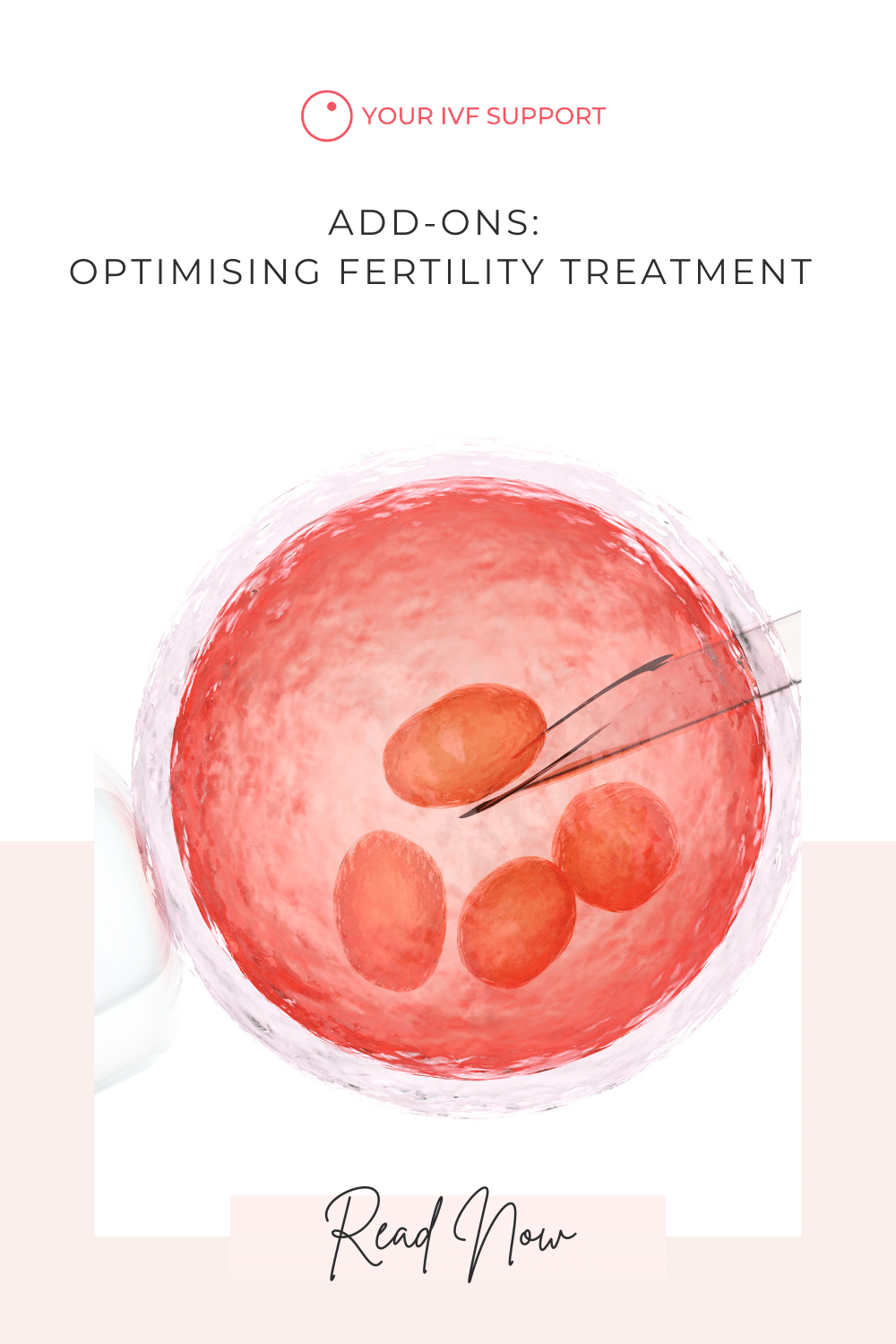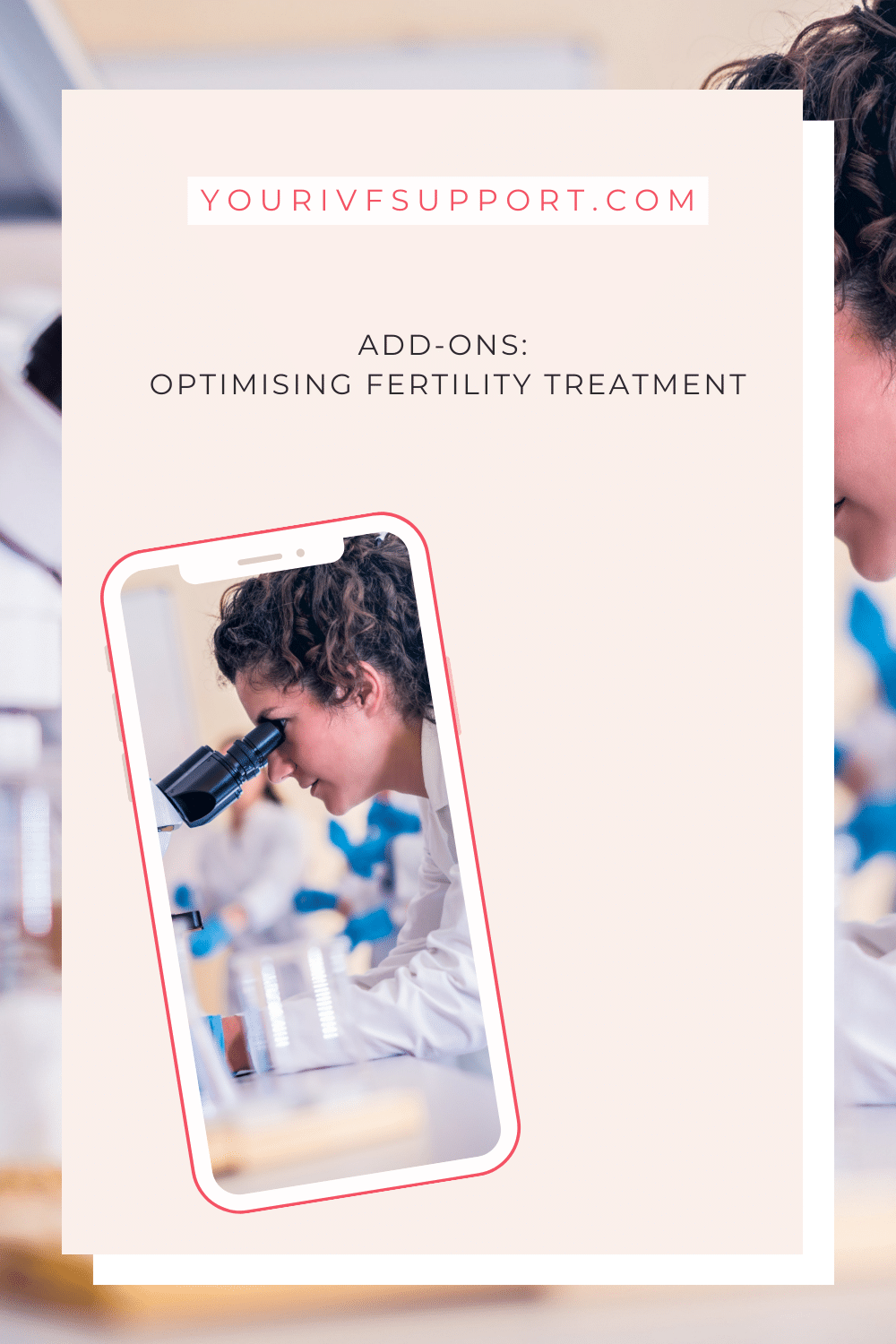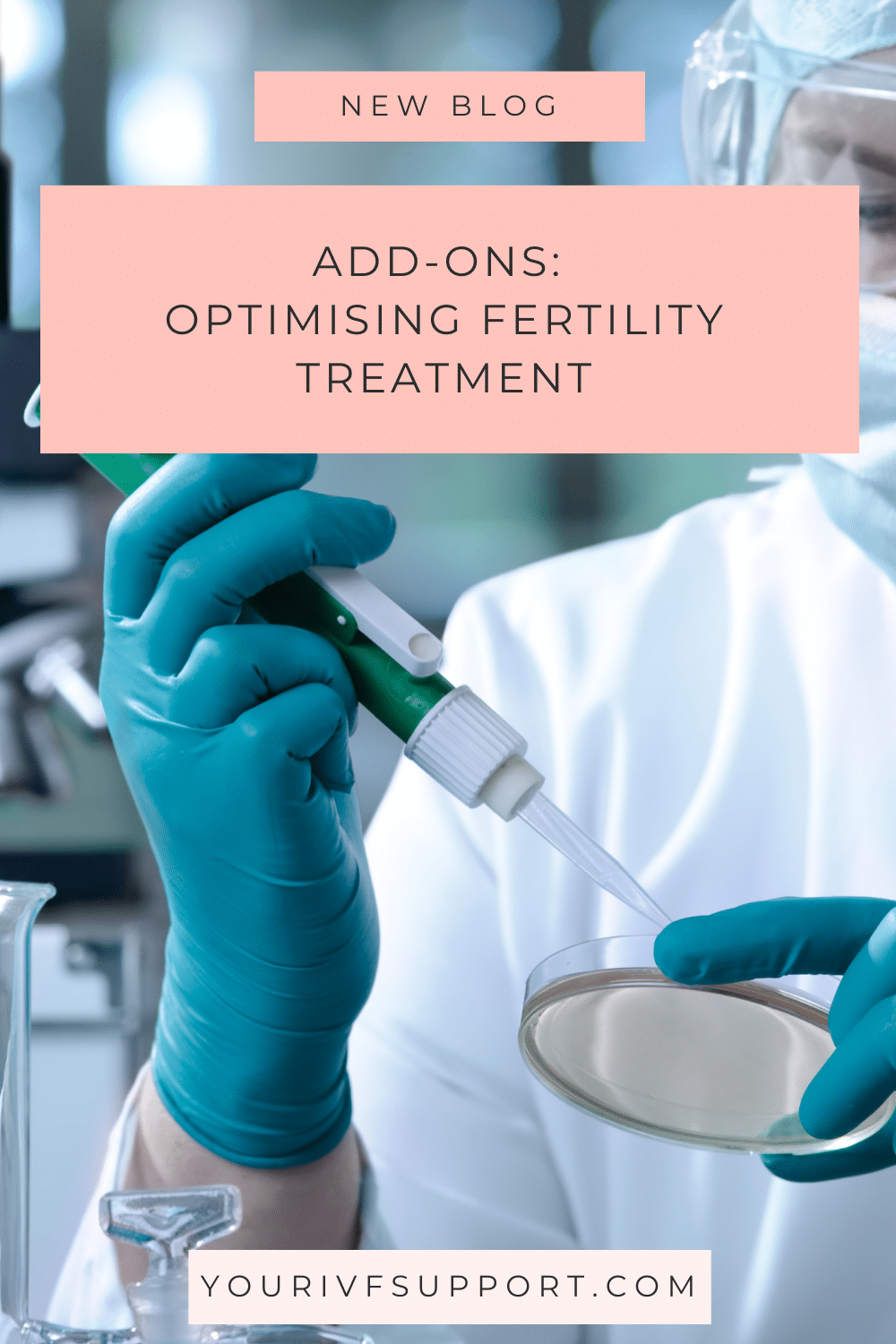In situations where the desire to have a child cannot be fulfilled naturally, there are many ways to make this dream come true. In addition to established procedures such as in vitro fertilisation (IVF) and intrauterine insemination (IUI), so-called complementary services play an important role by providing an additional level of support. In this article, we take a closer look at the world of complementary services: We look at their nature, discuss their advantages and disadvantages, consider ethical, emotional and financial aspects, and venture a look at future developments in the field.
The importance of ancillary services in fertility treatment
Before we delve into the intricacies of various ancillary services, I would like to clarify what exactly we mean by this term. In the field of fertility treatment, the term 'ancillary services' refers to additional procedures or techniques used in conjunction with the main methods, such as IVF or IUI. Their aim is to increase the chances of success of these procedures or to address specific challenges that may arise with conventional treatments.
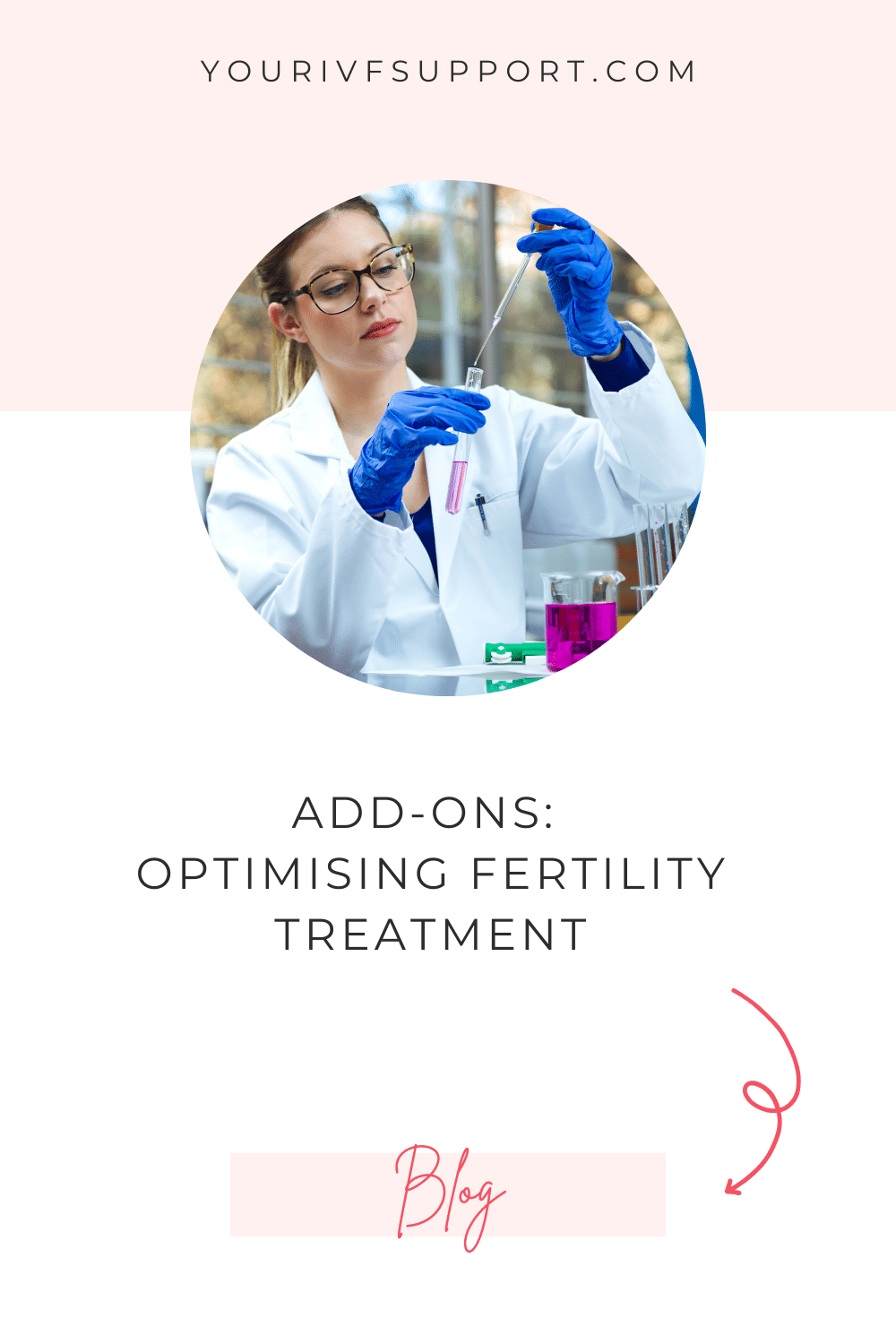
Common Add-ons and their advantages and disadvantages
Add-On 1: Preimplantation genetic diagnosis (PGD)
Preimplantation genetic diagnosis (PGD) allows genetic testing of embryos before implantation. This makes it possible to detect genetic diseases at an early stage and to select healthy embryos. Studies show that PGD can increase the chances of a successful pregnancy. However, the method is not perfect and there is a risk of false results. Ethical concerns relate to the selection of certain characteristics in the child.
Add-On 2: Egg donation
Egg donation offers women with poor egg quality the opportunity to become pregnant. Studies show that using donor eggs significantly increases the success rate. However, there are ethical issues regarding the genetic link and openness to the child about its origins.
Add-On 3: EmbryoGlue
EmbryoGlue is a medium used during embryo transfer to improve adhesion to the endometrium. Studies suggest that EmbryoGlue may slightly increase implantation rates. However, the long-term effects are still being studied.
Add-On 4: ICSI (intracytoplasmic sperm injection)
ICSI involves the direct injection of a single sperm into an egg. It is often used in cases of reduced male fertility. ICSI can increase the fertilisation rate, but there is a risk of ovulation.
Add-On 5: Endometrial scraping
Endometrial scratching is a procedure in which the lining of the uterus is slightly damaged before embryo transfer. It is thought that this may help the embryos to implant. However, studies have shown conflicting results about the benefits.
Add-On 6: Vitrification
Vitrification is a method of preserving eggs or embryos by rapid freezing. This technique can increase the survival rate of frozen eggs and embryos. Studies show that vitrification can lead to higher implantation rates and lower miscarriage rates.
Add-On 7: Receptor-activating chemicals
The use of receptor-activating chemicals during IVF treatment aims to improve communication between the embryo and the lining of the uterus. Studies suggest that these adjuncts may increase the likelihood of successful implantation. However, more research is needed to understand their optimal use and long-term effects.
Add-On 8: Stem cell therapy
Stem cell therapy is an emerging technique in which stem cells are injected into the cervix to improve tissue quality and function. This technique may facilitate embryo implantation. Despite promising results, stem cell therapy is still at an experimental stage.
Add-On 9: Blastocyst culture
Blastocyst culture refers to the prolonged development of embryos in the laboratory to the blastocyst stage before they are transferred to the uterus. This allows better selection of the most viable embryos. Studies have shown that the use of blastocyst culture can increase pregnancy rates.
Add-On 10: Mitochondrial Replacement Therapy (MRT)
Mitochondrial replacement therapy (MRT) is the replacement of defective mitochondria with healthy mitochondria from a donor. This can help prevent genetic diseases. Studies suggest that MRT may reduce the risk of mitochondriopathies. However, there are ethical and legal debates about this technique.
Add-On 11: Pre-implantation factor (PIF)
Pre-implantation factor (PIF) is a protein produced by the uterus to help the embryo implant. It is used as an adjunct to improve the chances of implantation. Studies suggest that PIF may modulate the immune response and facilitate implantation.
Add-On 12: Intralipid fusion therapy
Intralipid fusion therapy refers to the administration of lipid-containing solutions intravenously to modulate the immune system and increase the chances of implantation. Studies have shown mixed results regarding its efficacy. The exact mechanisms of action are not fully understood.
Add-On 13: PRP (platelet-rich plasma)
Platelet-rich plasma (PRP) is taken from the patient's blood and contains growth factors. It is applied to the uterus to promote tissue healing and regeneration. PRP is used as an adjunct to improve the quality of the endometrium. Limited studies show its effectiveness in increasing implantation rates.
Add-On 14: Traditional Chinese Medicine (TCM)
Traditional Chinese Medicine (TCM) includes treatments such as acupuncture, herbal medicine and nutrition. TCM is often used as a complementary therapy to improve fertility and support IVF treatment. Studies show that acupuncture and herbal medicine can improve blood flow to the uterus and reduce stress.
Add-On 15: ERA (Endometrial Receptivity Array) test
The ERA test is an analysis of the endometrium to determine the optimal time for embryo transfer. This is to ensure that the endometrium is ready to receive the embryo. Studies suggest that the ERA test can improve the chances of success.
Add-On 16: DNA fragmentation test
The DNA fragmentation test assesses the integrity of the male sperm at the genetic level. High levels of fragmentation can affect fertility. The test can provide appropriate treatment strategies for couples with male fertility problems. Studies show an association between increased DNA fragmentation and reduced pregnancy rates.
Add-On 17: Receptor-activating chemicals
The use of receptor-activating chemicals during IVF treatment aims to improve communication between the embryo and the uterine lining. Studies suggest that these adjuncts may increase the likelihood of successful implantation. More research is needed to understand optimal use and long-term effects.
Add-On 18: Stem cell therapy
Stem cell therapy is an emerging technique in which stem cells are injected into the cervix to improve tissue quality and function. This technique may facilitate embryo implantation. Although promising, stem cell therapy is still at an experimental stage.
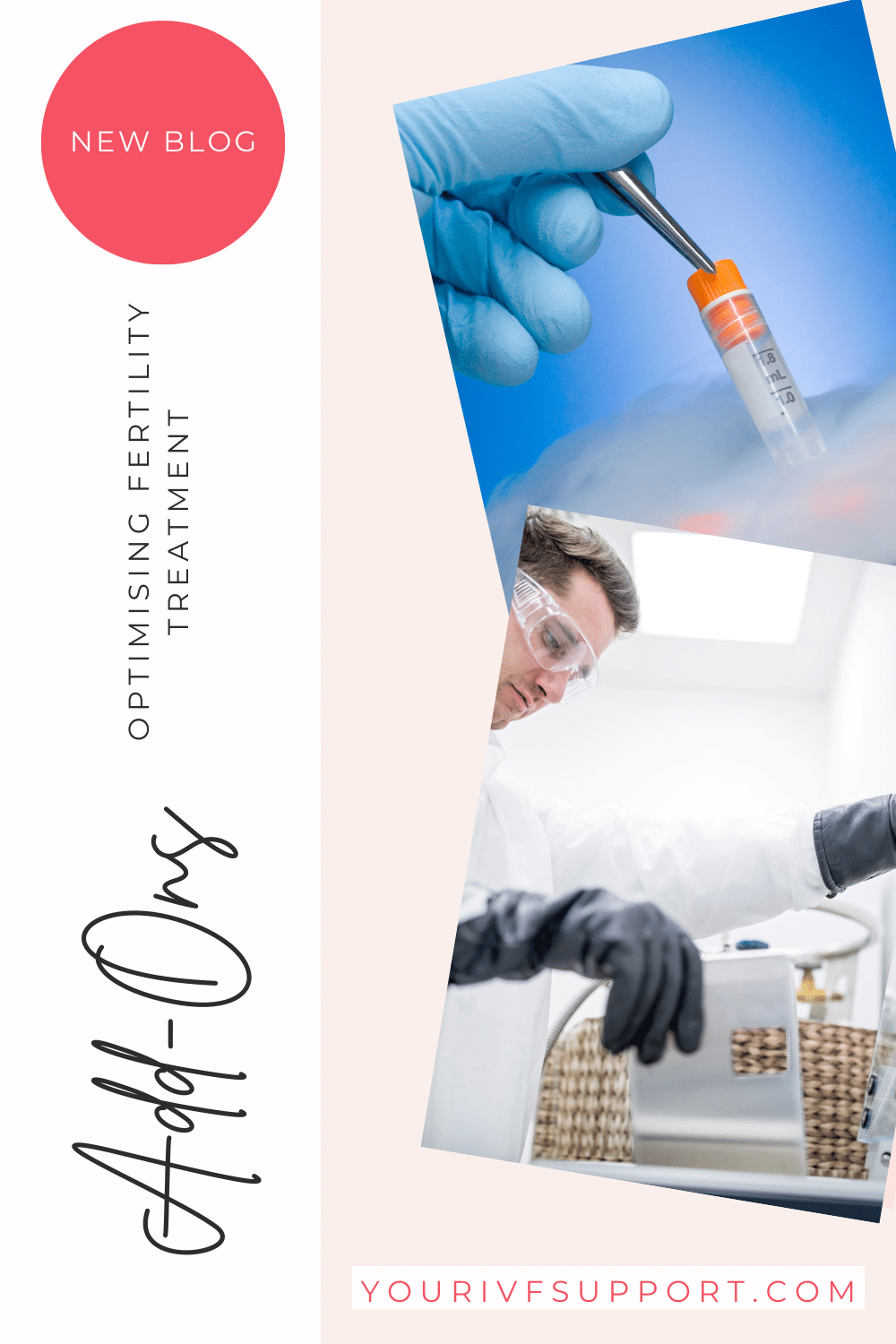
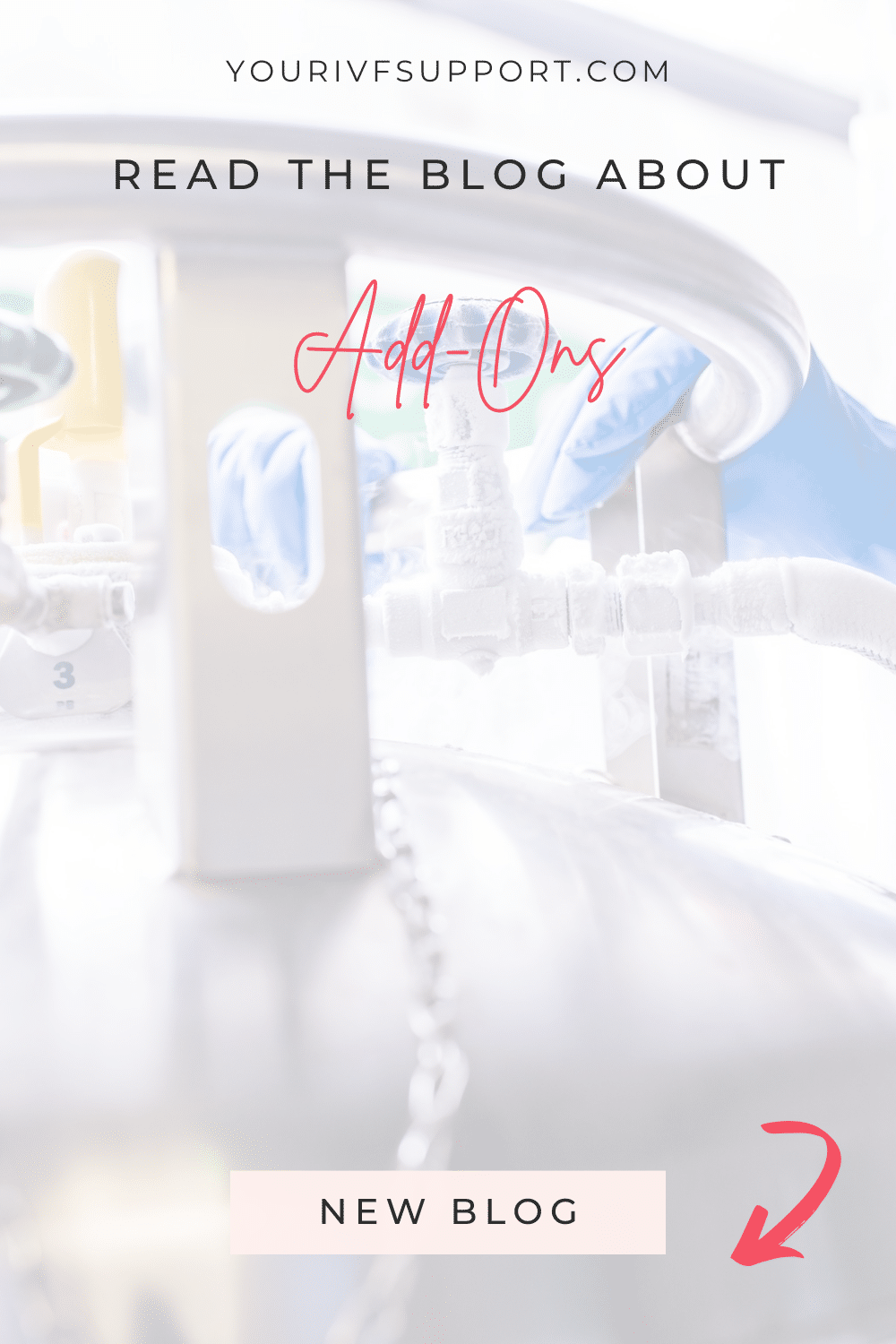
The emotional challenges of using ancillary services
The decision to use ancillary services in fertility treatment can be an intense emotional journey. The desire for successful treatment can increase anxiety and worry, which can lead to a real emotional rollercoaster. At this stage, it is important to have a supportive environment where you can open up and share your feelings. Recent studies have highlighted the importance of psychological support throughout the process as it can help to reduce the burden of stress.
Ethical considerations in the use of support services
The use of ancillary services raises important ethical issues. Preimplantation genetic diagnosis may lead to discussions about the selection of certain genetic traits. Mitochondrial replacement therapy (MRT) raises questions about genetic modification. Open and honest communication about these ethical issues is essential in order to make the best possible decisions.
It is also important to emphasise that not all additional services will necessarily lead to the desired results. Unfortunately, there are also providers in the fertility industry who may use ancillary services as a profitable business model without a clear benefit to the patient.
"It is also important to emphasise that not all additional services necessarily lead to the desired results. Unfortunately, there are also providers in the fertility industry who use ancillary services as a profitable business model without any clear benefit to patients."
Financial considerations in the use of ancillary services
The financial dimension of infertility treatment can be significant, especially if you are considering ancillary services. The cost can be a significant burden. It is therefore important to understand the financial implications in advance and to explore alternative funding options. Research shows that couples who seek financial advice early on are better able to manage costs effectively.
It is also important to stress that not all additional services will necessarily lead to the desired results. Unfortunately, there are providers in the fertility industry who use ancillary services as a profitable business model without any clear benefit to the patient[VD1], so it is important to do your research and seek advice before deciding on any particular ancillary services. Find out in detail which ancillary services have been shown to have positive outcomes and what benefits can actually be expected. This can help to ensure that financial resources are used efficiently and that unexpected costs are avoided.
The future of ancillary services in fertility treatment
Infertility medicine is constantly evolving, and the future of ancillary services looks promising. Advances in genomic research could provide the most accurate diagnoses. At the same time, ethical guidelines and legislation are urgently needed to ensure that these technologies are used responsibly.
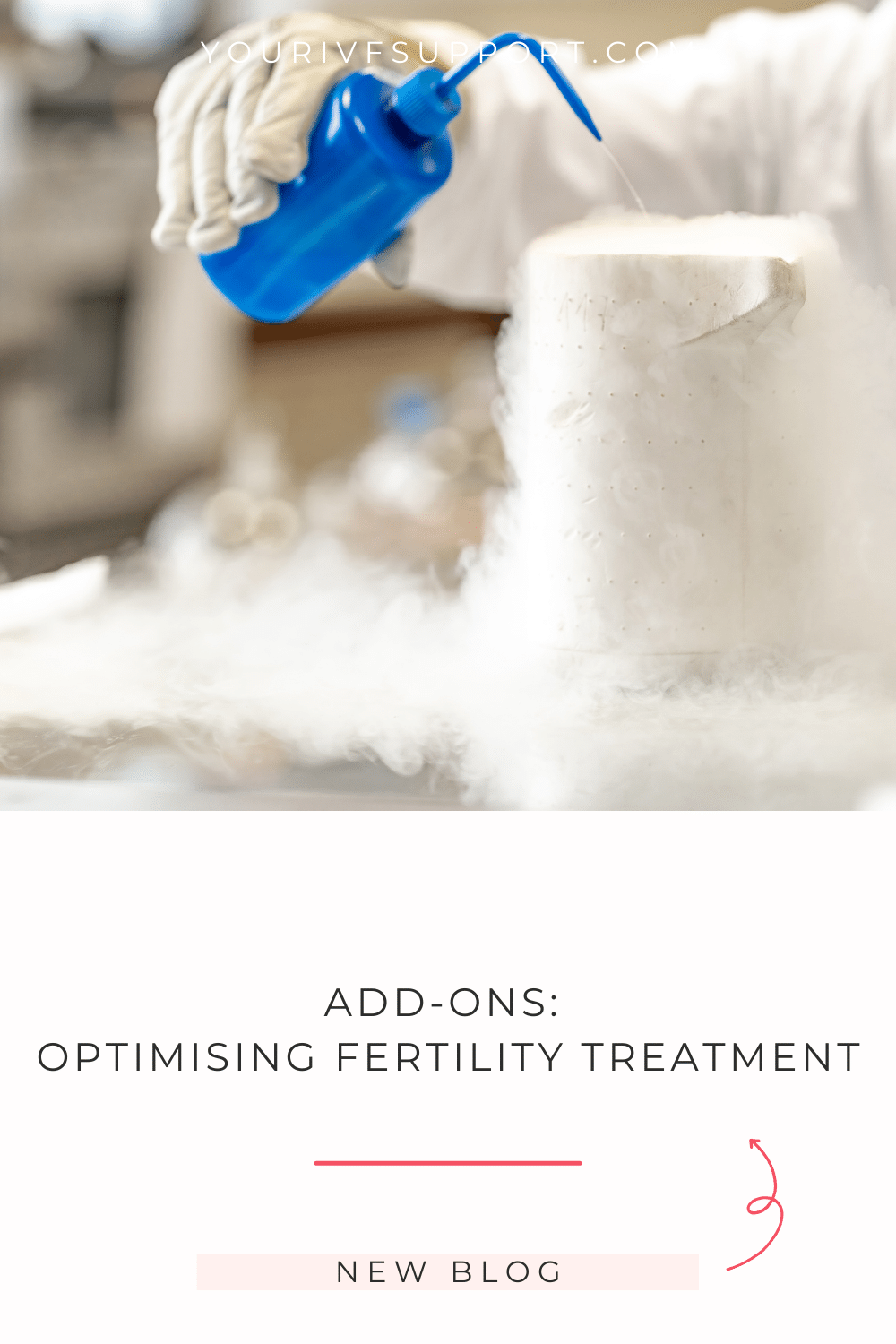
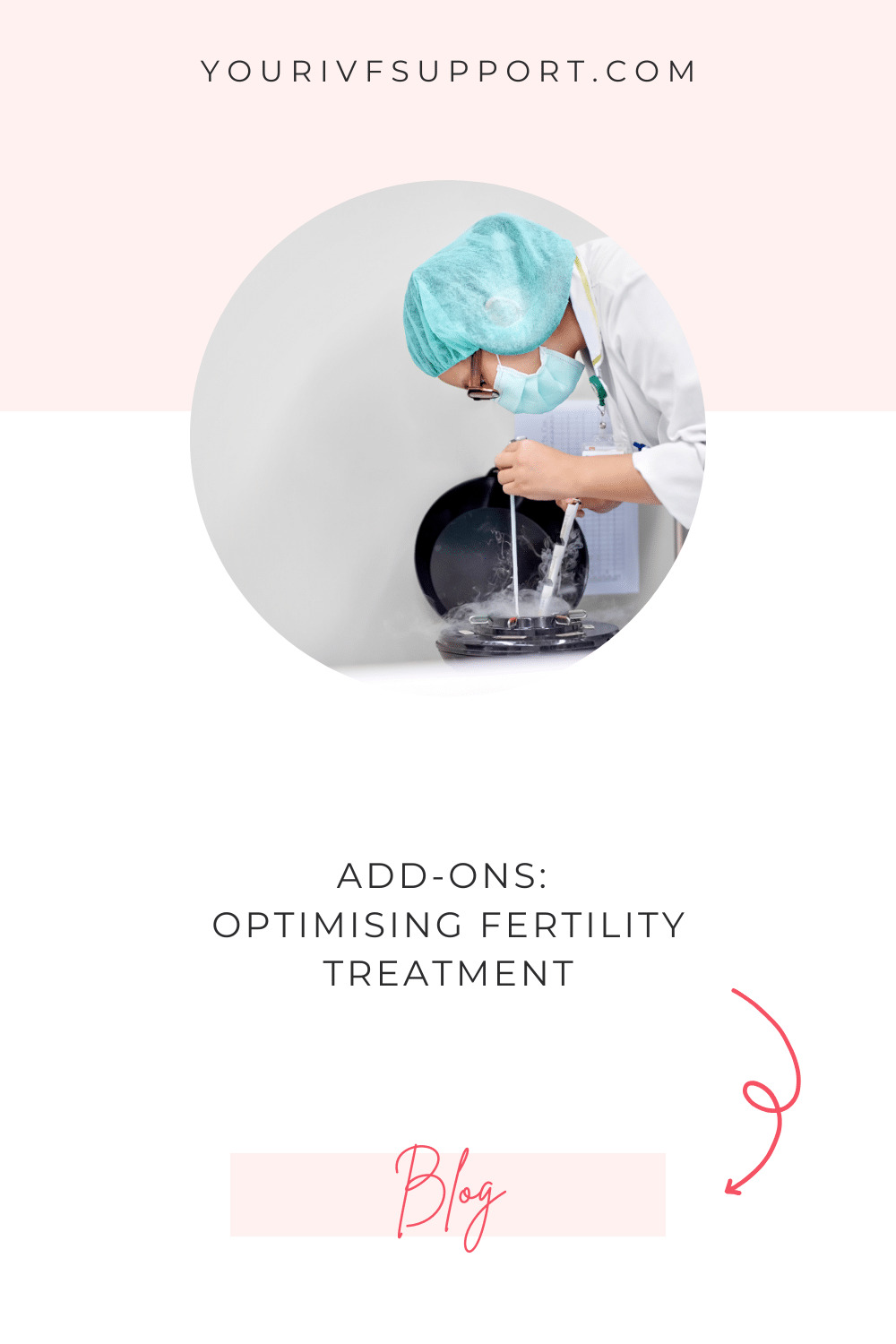
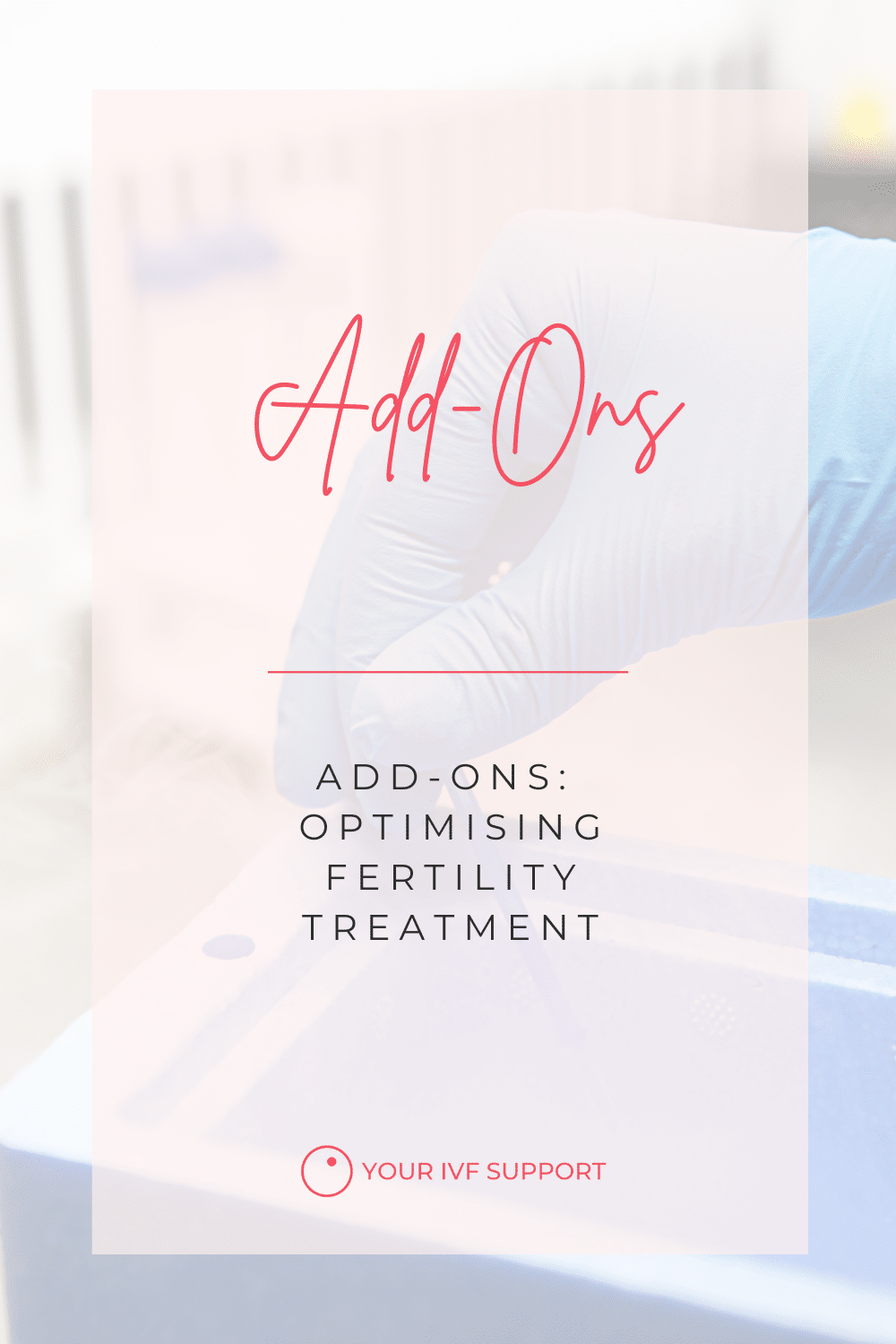
Conclusion
The world of infertility treatment offers a wide range of options for fulfilling the dream of having a family. Complementary services are exciting additions to the main treatments, but they should be chosen wisely. Whichever approach you choose, the emotional, ethical and financial dimensions should always be considered.
It is worth noting that, statistically, the use of ancillary services has led to remarkable progress. Studies have shown that the integration of certain complementary services has led to a significant increase in pregnancy rates. For example, the use of preimplantation genetic diagnosis (PGD) has increased success rates by up to 15%. Similarly, studies have shown that the use of vitrification can increase implantation rates while reducing miscarriage rates. These statistics show that certain add-ons can have a positive impact on the chances of success.
In conclusion, the decision for or against add-ons should be well considered. Be well informed about the pros and cons, talk to experts and get psychological support to make the best decision for you and your family planning. Your wellbeing is at the heart of this process and the different dimensions should be balanced to achieve the best possible experience and outcomes.
Please note that this article is for information only and is not a substitute for medical advice. Always consult a healthcare professional to discuss the most appropriate options for you.
